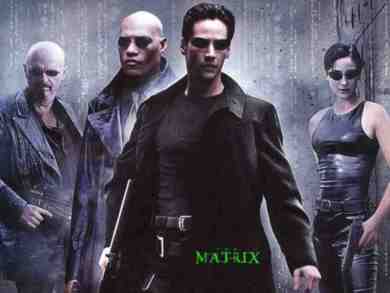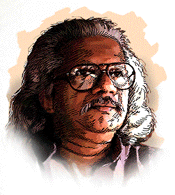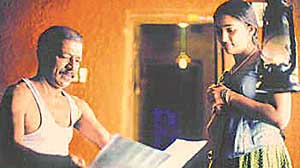From Celluloid to Digital Film Making
By K.S.SIVAKUMARAN
 My
task here is to write about some of the quality Malayalam films I saw recently
at the recent Goa Film Festival of India. The World of Cinema has undergone
radical changes with the use of the computer, graphic designs, animation
and of course the digital film making. The themes of the films are basically
derived from detective, spy, crime, science and espionage fiction. The
title of this week’s column represents only the first few paragraphs in
it. The idea is to show that digital film production is now becoming the
done thing these days. As examples I give a short note on three films I
saw in Colombo.
My
task here is to write about some of the quality Malayalam films I saw recently
at the recent Goa Film Festival of India. The World of Cinema has undergone
radical changes with the use of the computer, graphic designs, animation
and of course the digital film making. The themes of the films are basically
derived from detective, spy, crime, science and espionage fiction. The
title of this week’s column represents only the first few paragraphs in
it. The idea is to show that digital film production is now becoming the
done thing these days. As examples I give a short note on three films I
saw in Colombo.
 There
are films that I cannot understand their format. It’s all complicated.
A conventional filmgoer that still appreciates the European Cinema since
the 1950s would be baffled watching some of the films that are now produced
in the west, particularly in Hollywood. The Matrix trilogy was too complicated
for me. Recently, I saw another ‘futuristic film’ spanning a period between
2015 and 2450 A.D. This film Aeonex Flux now showing at the Majestic Cinema
is beyond me to follow it in linear terms.
There
are films that I cannot understand their format. It’s all complicated.
A conventional filmgoer that still appreciates the European Cinema since
the 1950s would be baffled watching some of the films that are now produced
in the west, particularly in Hollywood. The Matrix trilogy was too complicated
for me. Recently, I saw another ‘futuristic film’ spanning a period between
2015 and 2450 A.D. This film Aeonex Flux now showing at the Majestic Cinema
is beyond me to follow it in linear terms.
There was also a Hindi film combining a political and historical tradition with the mixing of contemporary social and political realities. The film was called 'Rengde Basanti' and is yet to be released in Sri Lanka. It’s a film about the shooting of a Hindi film by an English woman filmmaker. The film she wanted to make was on the Indian independence fighter Bhagavat Singh. It turned out to be a trespassing of time barriers and cleverly connecting the past with the present.
 There
was a third one, a Thamil film with a weird title – Dishum – (perhaps it
denoted the sound made from the barrel of a gun) which also used the digital
format to the best, although it had doses of the usual formula of diversion
from the focus on the theme. While the Hindi film was well made, the Thamil
film, though it had a strong love theme failed because of senseless direction.
One interesting feature was its opening. A shooting of a scene where a
stunt man (the hero) a substitute for the main actor, crashes into a truck
with fire around the jeep he was driving at high speed- almost as if it
was a suicide attempt. Gullible viewers and those ignorant of the Thamil
language, who might not be able to distinguish between a Malayalam film
and a Thamil film, could be even obsessed as to brand this film as
a ‘terrorist’ film. Such obsessions damage the country as a whole. Ignorance
is bliss sometimes, but not all the time, especially when a clear vision
is necessary if we were to solve our national problems.
There
was a third one, a Thamil film with a weird title – Dishum – (perhaps it
denoted the sound made from the barrel of a gun) which also used the digital
format to the best, although it had doses of the usual formula of diversion
from the focus on the theme. While the Hindi film was well made, the Thamil
film, though it had a strong love theme failed because of senseless direction.
One interesting feature was its opening. A shooting of a scene where a
stunt man (the hero) a substitute for the main actor, crashes into a truck
with fire around the jeep he was driving at high speed- almost as if it
was a suicide attempt. Gullible viewers and those ignorant of the Thamil
language, who might not be able to distinguish between a Malayalam film
and a Thamil film, could be even obsessed as to brand this film as
a ‘terrorist’ film. Such obsessions damage the country as a whole. Ignorance
is bliss sometimes, but not all the time, especially when a clear vision
is necessary if we were to solve our national problems.
I also saw three Sinhala films. Two of them were passable as average ‘entertainers’, but they were far behind the ‘quality ‘films that were made in Sinhala since the late 1950s.
I do not wish to say anything more about these films that cater to the average filmgoers that appreciate anything that goes as ‘movies’...
Malayalam
Malayalam is the language spoken in the Kerala state in southwest India. It is a Dravidian language with close affinity to Thamil. The literacy rate is relatively high in this state. Its borders touch Thamilnadu in the south, Nagar Koil town, and in the north western Palakattu, near the Coiambatore mega city. The spoken language rhythms in Malayalam and those in Lankan Thamil are closely related to each other.
When Lankan Thamilians speak their language in Thamilnadu, people there often ask the former whether they were speaking Malayalam. Malyalam was relatively a language of recent origin It has a mixture of Sanskrit and Thamil. The Kerala area was known as belonging to the Chera kingdom in the past. If we go back to our roots most of us could claim ancestry in that ethnic group of people.
The Keralites are also enterprising people. If you visit New Delhi, you would find that most of the bureaucrats are either Malayalees or Punjabis or Tamilians.
 As
far as artistic films were concerned, Kerala had produced some outstanding
directors like Adoor Gopalakrishnan, Aravindan, Saji N.Karun, Jeyaraj,
and K.S.Sethumathavan, just to mention a few names. However majority of
the films produced in Malayalam now are trash with crude sex scenes.
It’s frustrating to see these so-called sex scenes, because they are not
‘erotic’ but bordering on pornographic display of women’s upper and lower
As
far as artistic films were concerned, Kerala had produced some outstanding
directors like Adoor Gopalakrishnan, Aravindan, Saji N.Karun, Jeyaraj,
and K.S.Sethumathavan, just to mention a few names. However majority of
the films produced in Malayalam now are trash with crude sex scenes.
It’s frustrating to see these so-called sex scenes, because they are not
‘erotic’ but bordering on pornographic display of women’s upper and lower
parts of their bodies just missing their private parts. There is no sense of direction.
This is ironical, especially when there is a vibrant film society movement in Kerala. In recent times Kerala hosts its own international film festivals like similar film festivals in other states. But the main International Film Festival of India (IFFI) is hosted by the Film Directorate under the Ministry of Information and Broadcasting in New Delhi. From this year, the IFFI has a permanent venue in the state of Goa. As such henceforth it would be known as the Goa International Film Festival. This annual festival will be held from November 24 to December 04 each year. I attended the 36th IFFI in the latter part of 2005.
For the benefit of our readers I give below some comments on two of the Malayalam films shown at the festival.
Achuvinte Amma (directed by Sathyan Anthikkad), Daivanamathil (Jayaraj), Kannae Madanguka (Albert), Kathavasheshan (T.V.Chandran), Kalcha (Blessy Ipe Thomas), Oridam (Pradeep Nair) and Perumalaikalam (Kamal) were the total number of Malayalam festivals shown at the IFFI.
Most of these films were well directed in a cinematic sense, meaning the understanding of the film medium was evident. For most part the presentation of the themes were realistic. The depiction of society and the portrayal of characters in a psychological foundation were all appreciable.
In the Name of God (Daivanamathil) is about a young Muslim girl, Samira... She is married to Anwar whom she loves. But he joins a radical Islamic organization that is involved in extreme militant activities. After a long struggle she tries to convert him to normalcy but yet she falls a victim in the racial riots. It’s a political film while remaining a picture of deep love between the protagonist and the antagonist.
Sunny Joseph, reputed cinematographer captures the mood of the film in the right
Settings.
Award winning director Jayaraj’s earlier films include Deshadanam, Kaliyattom, Karunam and Santham.
 Revert,
Oh My Vision (Kanne Madanguka) is the story of a daughter in
a poor family, apparently going to West Asia to earn money, but in fact
she earns begotten money as a sex worker. This fact the parents did not
know. When the mother did know later, the daughter pretends not know her
and when the mother leaves she collapses with deep shame and sorrow. The
film is about a social issue and also a personal one.
Revert,
Oh My Vision (Kanne Madanguka) is the story of a daughter in
a poor family, apparently going to West Asia to earn money, but in fact
she earns begotten money as a sex worker. This fact the parents did not
know. When the mother did know later, the daughter pretends not know her
and when the mother leaves she collapses with deep shame and sorrow. The
film is about a social issue and also a personal one.
More about Malayalam films later.
Contact: sivakumaranks@yahoo.com /2587617





